True or false quizzes are a simple yet effective way to assess knowledge, gather responses, or engage your audience. Thanks to Google Forms, you can easily create and conduct true or false quizzes in a digital format. In this article, we will walk you through the step-by-step process of creating a true or false quiz in Google Forms and explore how this versatile tool can be utilized for educational assessments, surveys, and more.
Table of content
- Part 1: Step-by-step Guide on Making A True or False Quiz in Google Forms
- Part 2: OnlineExamMaker: An Alternative Way to Make a True or False Quiz
- Part 3: How to Create A True or False Quiz with OnlineExamMaker
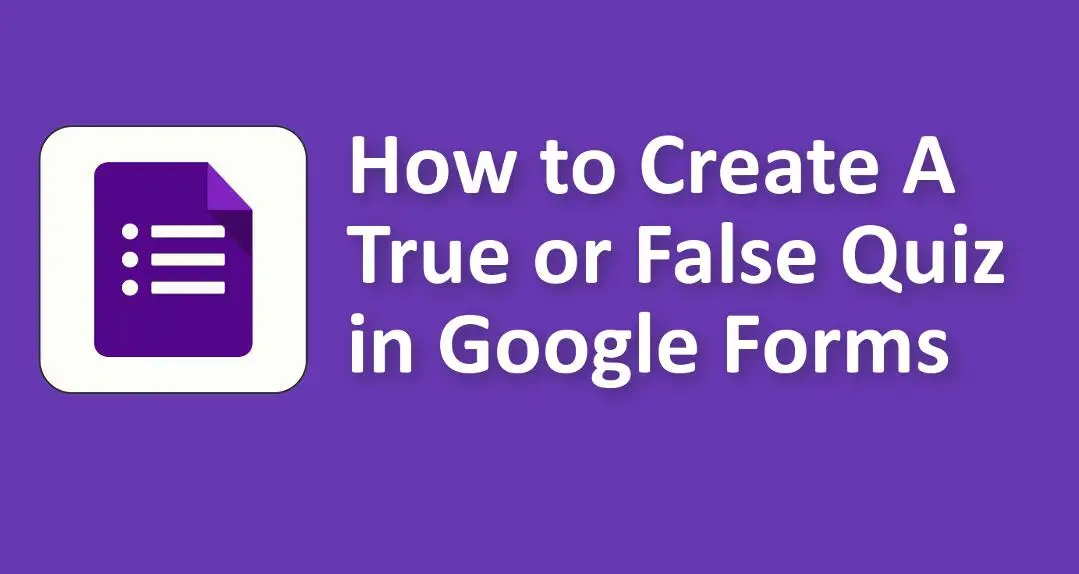
Step-by-step Guide on Making A True or False Quiz in Google Forms
Setting Up Your Google Form
Before diving into the creation of your true or false quiz, it’s essential to set up your Google Form correctly to ensure it serves your purposes effectively.
1. Create a New Google Form
To begin, access Google Forms through your Google account. Once you’re in, click on “Blank” to initiate the creation of a new form.
2. Title and Description
Give your form a clear and descriptive title that reflects the quiz’s subject or purpose. Additionally, add a brief description or set of instructions to guide respondents on how to complete the quiz. Clear instructions are particularly important for ensuring that participants understand the format of the true or false questions.
Adding True or False Questions
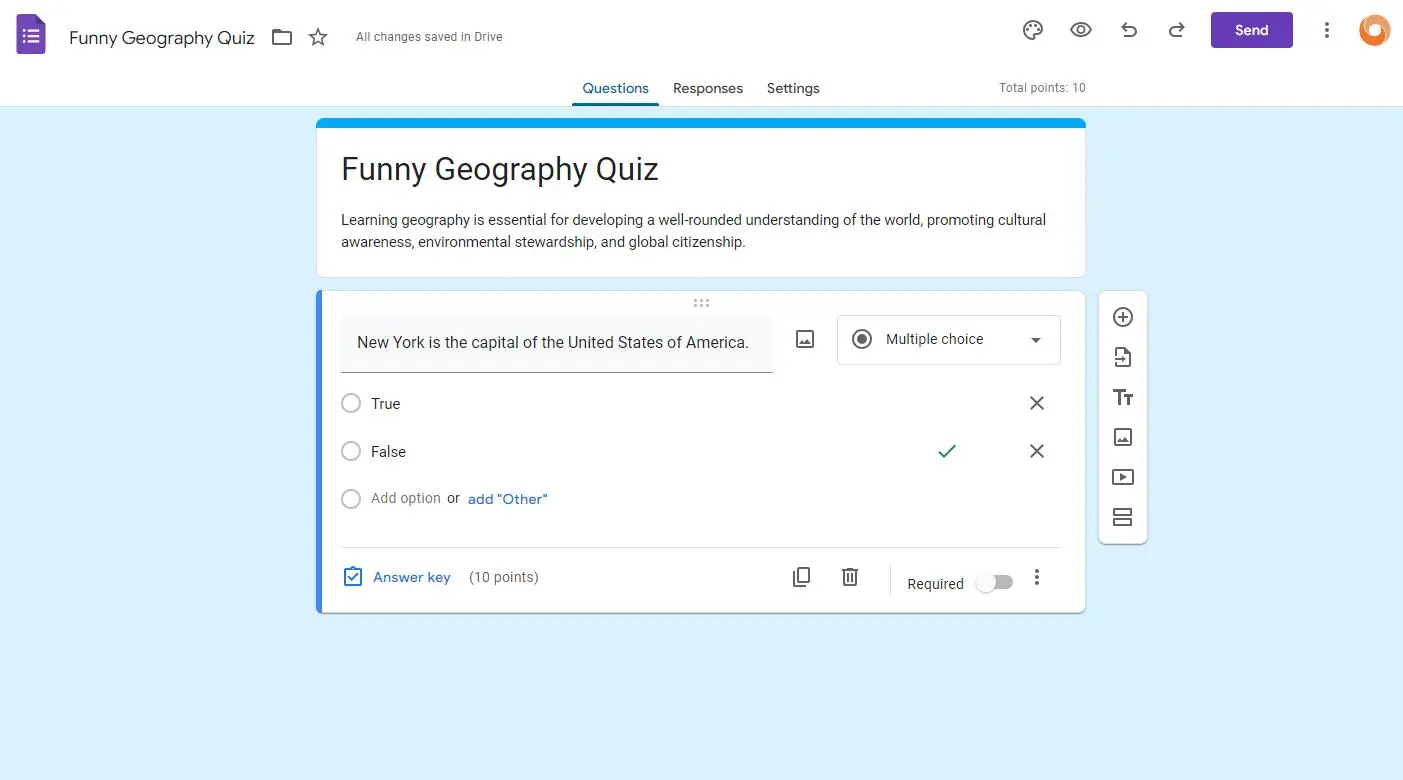
True or false questions are a staple of many quizzes, known for their simplicity and efficiency. Here’s how to create them in Google Forms:
1. Adding a New Question
• To add a true or false question, click on the “+” button to insert a new question.
• Choose “Multiple choice” as the question type.
2. Crafting Your True or False Question
• Craft your true or false question in the “Question Title” field. Keep it concise and straightforward.
• For a true or false question, you will only have two answer choices: “True” and “False.”
3. Marking the Correct Answer

• To indicate the correct answer, select the checkbox corresponding to the correct choice (“True” or “False”).
Customizing Your True or False Quiz
Google Forms offers customization options to help you create a visually appealing quiz:
1. Themes and Customization
• Explain how to use themes and customization features to match your quiz’s appearance to your preferences or branding.
• Offer tips on selecting a theme that complements your quiz’s subject or audience.
Organizing Your Quiz
Organization is key to an effective quiz, especially if it’s longer or covers multiple topics. Here’s how to use section breaks for better organization:
1. Section Breaks
• Discuss the importance of section breaks for dividing your quiz into logical sections.
• Explain how to insert section breaks between groups of questions to make the quiz more manageable for respondents.
You might like to know
Create an auto-grading quiz/assessment without any coding – try OnlineExamMaker today!
Reviewing and Testing
Before sharing your true or false quiz, it’s essential to review and test it to ensure that it functions as intended.
1. Preview Your Quiz
• Highlight the importance of previewing the quiz to identify any errors, inconsistencies, or formatting issues.
• Encourage authors to review the quiz as a respondent would see it.
2. Test Responses
• Emphasize the significance of testing the quiz with sample responses to ensure that it accurately records and scores answers.
• Suggest creating a test account or using trusted individuals to provide feedback on the quiz’s functionality.
Sharing and Collecting Responses
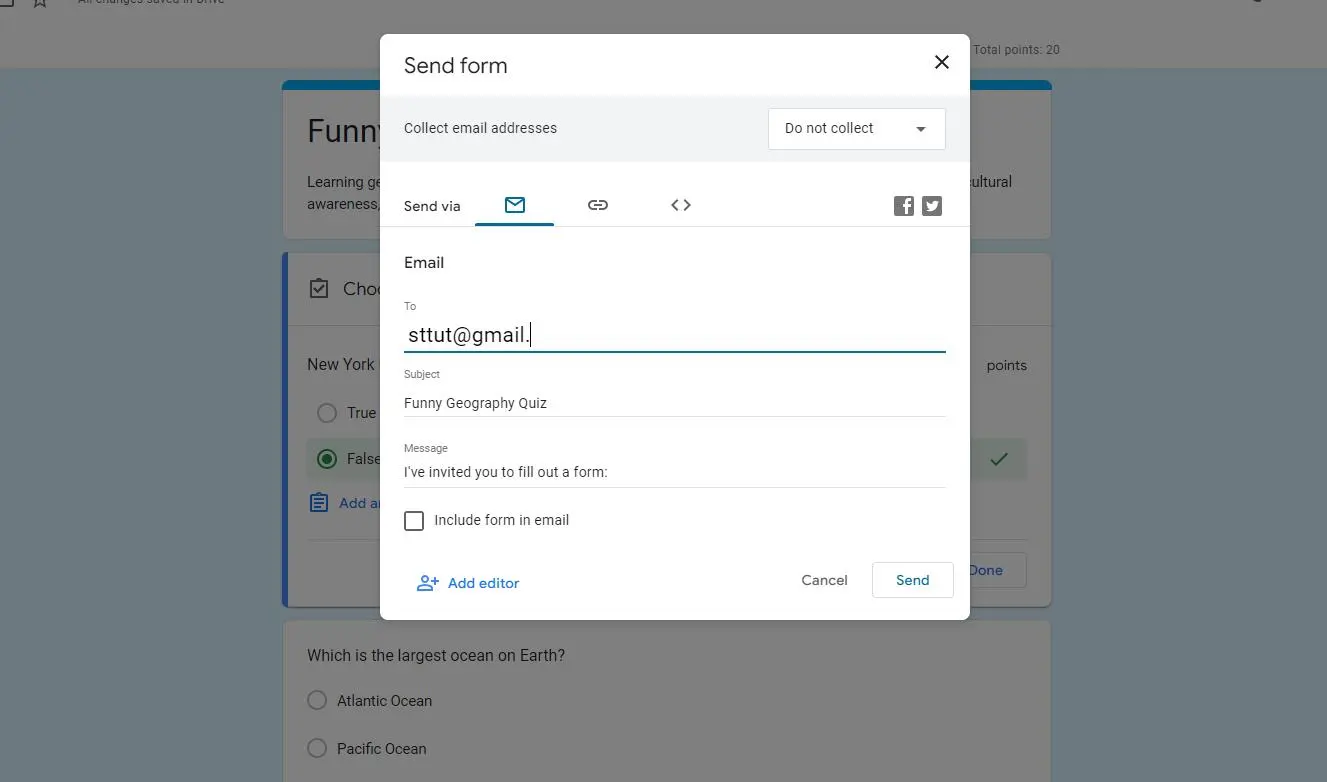
Once you are satisfied with your true or false quiz, it’s time to share it with your target audience and start collecting responses.
1. Share Your Quiz
Explain the various methods for sharing your true or false quiz:
• Email Distribution: Send the quiz directly to respondents via email.
• Link Sharing: Generate a unique link to the quiz that can be shared on websites, social media, or through messaging platforms.
• Embedding: If you have a website or blog, demonstrate how to embed the quiz directly into your web page.
2. Privacy and Access Settings
• Discuss privacy and access settings, allowing authors to control who can respond to the quiz.
• Explain how to adjust settings to make the quiz public, restricted to specific individuals, or limited to one response per person.
Collecting and Analyzing Responses
As respondents start submitting their answers, you can access and analyze the collected data directly within Google Forms.
1. Accessing Response Data
• Describe how to access and view the responses submitted through Google Forms.
• Highlight the convenience of having response data readily available for review.
2. Exporting to Google Sheets
• Explain the option to export response data to Google Sheets or other spreadsheet software for more in-depth analysis.
• Mention that Google Sheets allows for advanced data analysis and visualization, making it a valuable tool for interpreting quiz results.
OnlineExamMaker: An Alternative Way to Make a True or False Quiz
OnlineExamMaker is a feature-rich software solution that allows educators, trainers, and organizations to easily create interactive and true or false quizzes and assessments. With its user-friendly interface and powerful capabilities, OnlineExamMaker simplifies the process of designing and delivering effective assessments.
Key Features
10 Question Types: Support up to 10 different types of questions, including multiple choice, true-false, fill in the blanks, subjective, match matrix and more.
Edit Questions: Option to create quizzes from scratch, copy the available activities entirely, or mix and match.
Create Your Next Quiz/Exam with OnlineExamMaker
How to Create A True or False Quiz with OnlineExamMaker
Step 1: Get started with OnlineExamMaker >
Step 2: Create true or false questions in OnlineExamMaker Question Editor.
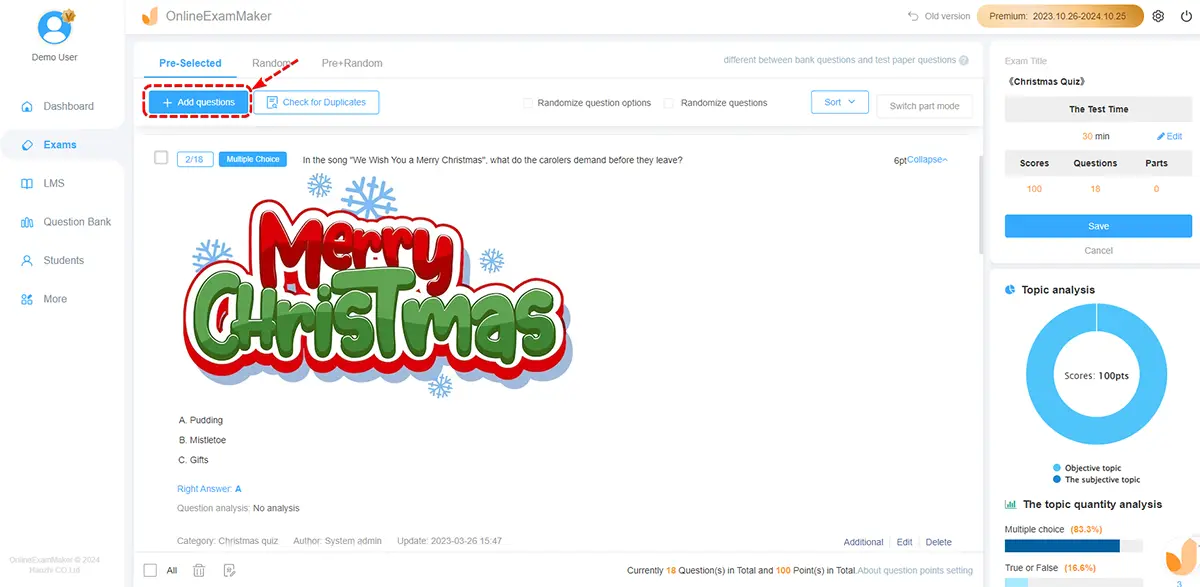
Step 3: Set up a new quiz, then add an optional description or instructions for participants.
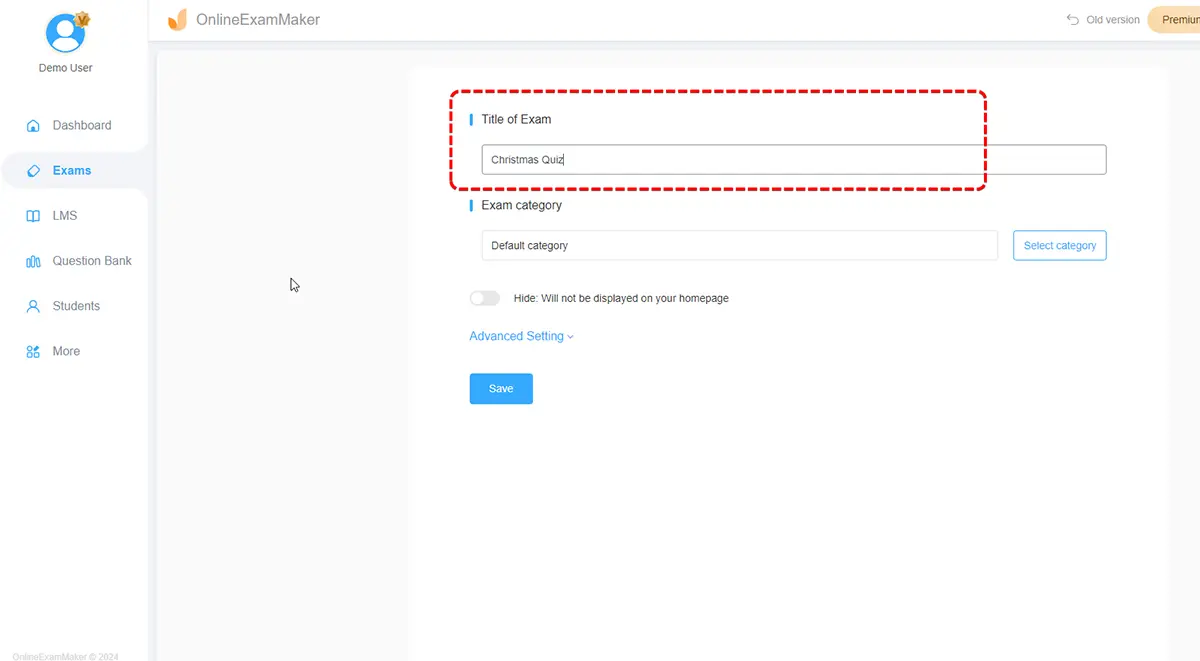
Step 4: Once your quiz is ready, click on the “Publish” button to release your assessment.
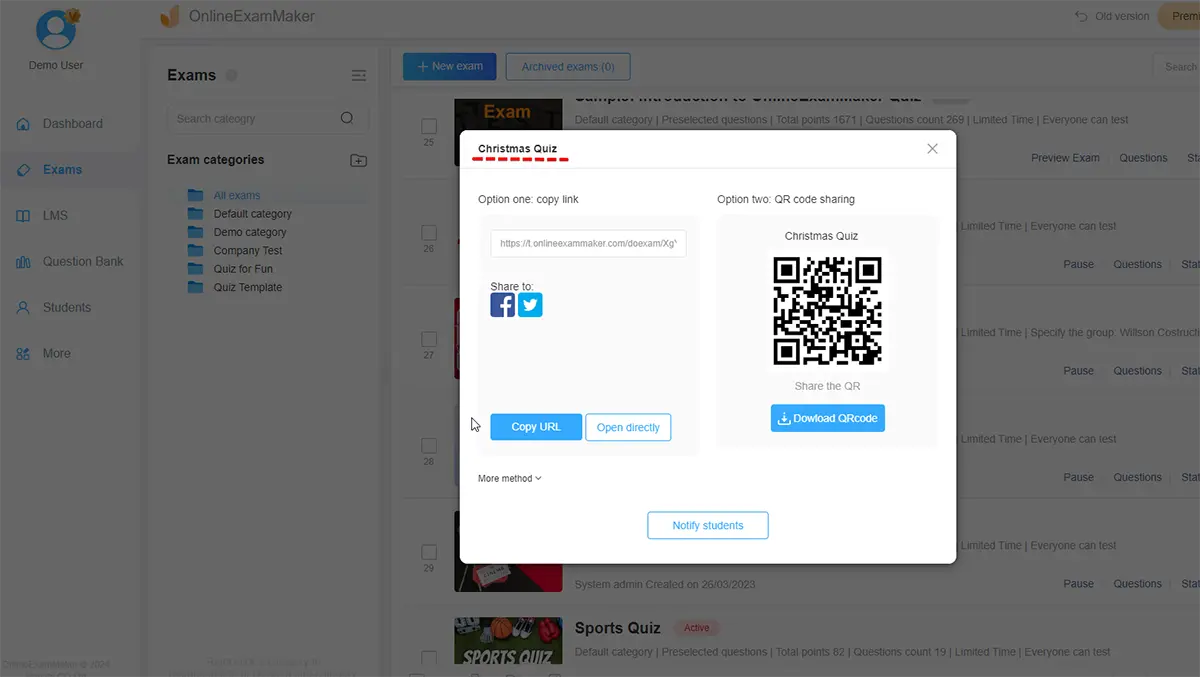
Conclusion
Creating a true or false quiz in Google Forms is a straightforward process that offers numerous advantages, whether you’re an educator assessing student knowledge or a business professional gathering responses for decision-making. By following the steps outlined in this guide, you’ll be well-equipped to design engaging and informative true or false quizzes tailored to your specific needs. So, start creating your own interactive quizzes today, and harness the power of Google Forms for your assessments and data collection needs.